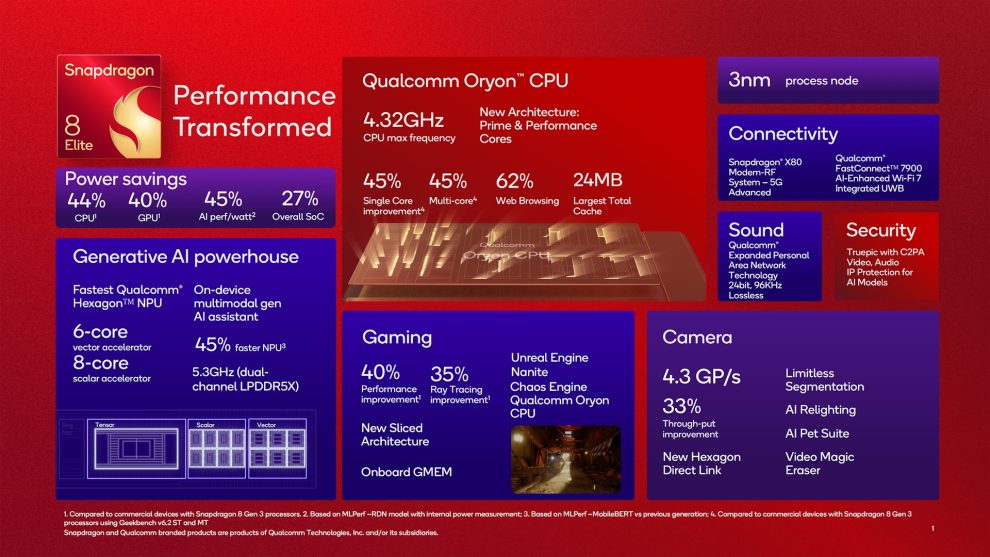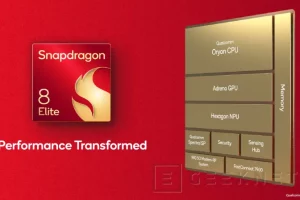The new Qualcomm hardware debuts design and nomenclature, since it is nothing other than what we would have known as Snapdragon 8 Gen 4 if we had maintained the current name. Be that as it may, the changes go beyond the superficial, as evidenced by the use of a totally new CPU called Oryon. This chipset element dispense of the old high-efficiency cores or E-Cores, integrating in their place two “prime” Oryon cores at 4.32 GHz for the most demanding tasks and six “performance” cores at 3.52 GHz.
For its part, the L2 cache now amounts to 24 MB and there is support for LPDDR5X-10667 memories.
Qualcomm indicates that this CPU is a second generation design capable of performing up to 45% more in mode. single-core than a Snapdragon 8 Gen 3 and up to 45% in multicore. These are big words, and we will have to check whether these data adjust to reality when the first devices appear, because a priori it seems that we are talking about a much bigger leap than can be expected between generations.
Something similar happens with the Adreno GPU, which migrates from its previous monolithic topography to a new design sliced which separates each processing zone into independent computing units. This change allows the clock speed to be raised to a maximum of 1.1 GHz while increasing efficiency, resulting in up to 40% faster processing and a 35% improvement in ray tracing speed. According to Qualcomm, its GPU can also save 40% energy, although this data is always very optimistic and usually reflects the relationship between power-efficiency more than the battery improvement that the user observes.
AI processing, for its part, has also been an aspect that Qualcomm has influenced. You just have to see that the new Hexagon NPU provides a performance improvement of up to 45% at the same watts. Curiously. Qualcomm does not want to talk about TOPS figures, which it already considers dispensable data and of little value to the user. This NPU is supported by two mini NPUs focused on minor tasks such as the Sensing Hub, which also uses two image sensors, a DSP and its own memory to connect to Wi-Fi networks and always keep sensors such as cameras and card readers active. footprints.
Finally, Qualcomm has integrated a new ISP for cameras with AI functions to perform advanced processing tasks even during real-time capture at 4K and 60 FPS. The resolution and speed caps are 8K@30, 4@120 and 2K@480. Initially, phones equipped with a chipset Snapdragon 8 Elite will be able to record with up to three 48 MP sensors simultaneously at 30 FPS, as unlikely as this may be.
Everything indicates that the first phones with the last chipset from Qualcomm will hit the market very soon. According to the press release, “Asus, Honor, iQOO, OnePlus, OPPO, RealMe, Samsung, Vivo, Xiaomi and more” will announce their corresponding mobile phones in a matter of weeks. OnePlus should be one of the early risers, since the OnePlus 13 presentation event is scheduled for October 31.













Add Comment